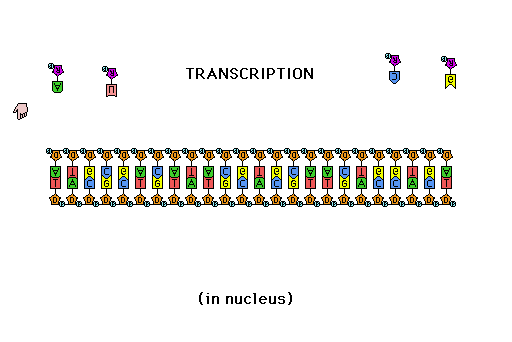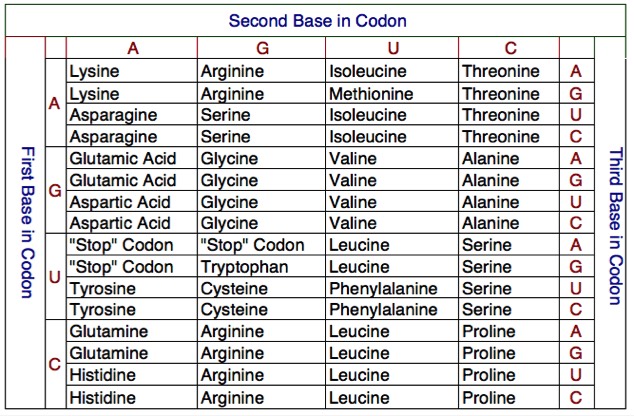One of the most important activities of a cell is the production of proteins that fulfill major roles in the cell--structural, enzymatic, hormonal, and more. The instructions for building all the proteins an organism needs to make are located in the DNA molecules of the chromosomes. Chromosomes never leave the nucleus of the cell. However, protein synthesis is carried out by the ribosomes, small structures which either float freely in the cytoplasm or are attached to membrane networks that snake their way through the cell—both outside the nucleus.
This section will explain briefly and superficially the way the instructions reach the ribosomes and how they are translated into the language of proteins. This information is not critical for understanding the use of DNA for genealogy but does form a foundation for understanding the way genetic mutations are expressed and a basis for understanding genetic differences.
A protein is a chainlike molecule built of subunits of smaller molecules called amino acids. We obtain most of our amino acids by digesting proteins taken in with our food. The digestive process breaks the protein chains down into individual amino acid molecules which are then absorbed by the blood and transported to the individual body cells. Human cells can also manufacture some amino acids. However, eight of the amino acids that are essential to building human proteins must be acquired from food. They eight essential amino acids are phenylalanine, valine, leucine, isoleucine, lysine, threonine, tryptophan and methionine. Histidine is essential for infants but not for adults.





